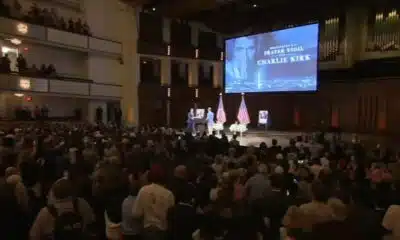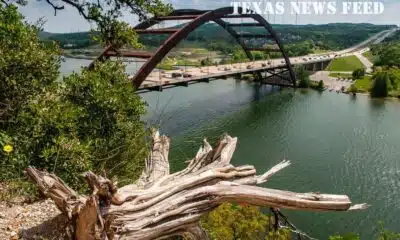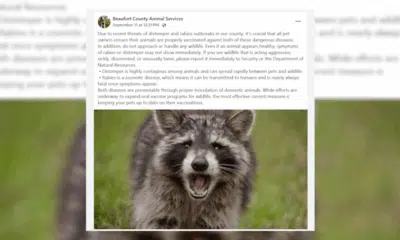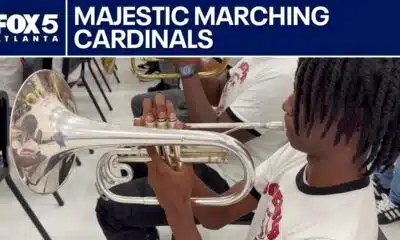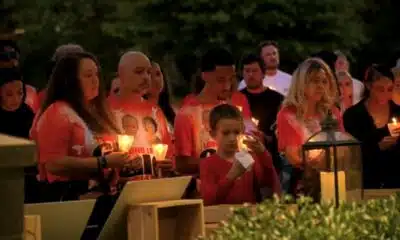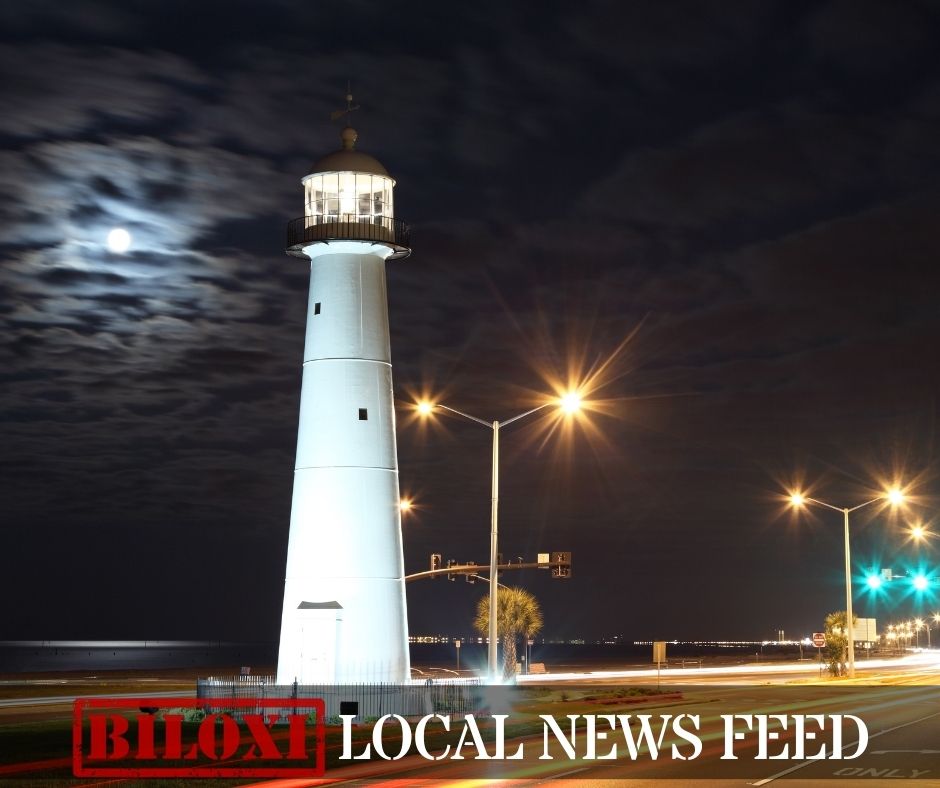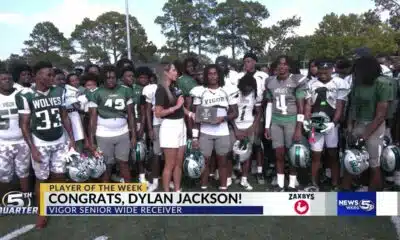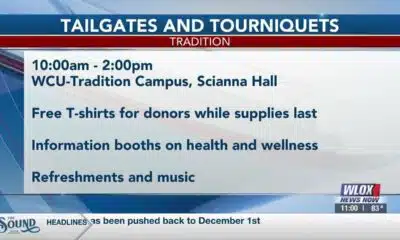News from the South - North Carolina News Feed
Debris locations questioned? Why the Muni? Will Helene aftermath throw I-26 work off schedule? • Asheville Watchdog
Today’s round of questions, my smart-aleck replies and the real answers:
Question: Several readers have asked about the debris site that was proposed for a park near the Deaverview public housing neighborhood in West Asheville. Questions include: What will be processed there? And how can residents make the city hold true to their one year stated usage? Is this safe?
My answer: Not much humor to be found in debris, but if you thought Asheville was “Trashville” before Helene, you ain’t seen nothing yet.
Real answer: The city and county devoted a big chunk of Monday’s daily Helene briefing to debris cleanup and removal, because it’s going to be a huge subject over the coming months. And there’s a lot of debris — 10 million cubic yards in Buncombe County, including Asheville.
First, let’s get to that park near Deaverview, located at 65 Ford St.
“No additional debris will be taken to 65 Ford St., and none will be taken to the Municipal Golf Course site while we continue to look for and secure additional sites,” Asheville City Manager Debra Campbell said at the briefing. “However, security and site prep measures such as fencing and access for heavy machinery will continue on the front nine of the Municipal Golf Course and at the 65 Ford St. site, so they are ready to be reactivated if needed.”
Campbell said Roger Farmer Park was permitted to handle debris, but she said it will not be used.
“Our debris removal strategy will continue to be dynamic, and we will keep pivoting when possible, as we are able to secure additional sites,” Campbell said. “We want to have as few impacts on neighborhoods and business areas as possible. We will continue to diligently monitor the temporary sites to ensure environmental regulations are met.”
Safety remains the priority, Campbell stressed.
In introducing the topic of storm debris, Campbell acknowledged it was “another touchy subject.”
“We are aware of the concern that many have expressed about the location of sites that were initially chosen to manage storm debris,” Campbell said. “I want to emphasize that the safest thing we can do for our environment, our economy and our community is to remove storm debris from our homes and business areas as quickly and as responsibly as possible.”
A sense of urgency surrounds debris removal.
“The longer storm debris remains in our neighborhoods and business areas, the longer we are living with fire and safety hazards,” Campbell said.
Last week Campbell announced the city had activated the Muni and the park as debris sites.
“Since last week, we have secured an additional site at Enka Commerce Park in West Asheville,” Campbell said. “The Enka Commerce Park site will now be the main site where storm debris will be taken to be staged, grinded, compacted and prepared for hauling out of the city.”

At Monday’s briefing Campbell introduced Greg Shuping, a consultant now serving as the city’s deputy emergency operations center manager.
Shuping noted that Asheville, within its city limits, has 2.5 million cubic yards of debris for its contractor, Southern Disaster Recovery, to remove. Buncombe County is using the same contractor for its debris removal.
Shuping said 2.5 million cubic yards of debris translates to “in excess of 70,000 (dump) truckloads of debris” that must be taken to a processing site, then taken out of the county. The local debris will likely end up in a South Carolina landfill.
The city is also contracting with a company called Debris Tech to serve as the city’s monitoring and environmental compliance oversight to the prime contractor, Shuping said.
Vegetation debris can be ground up, and other types, including construction and demolition rubble, can be processed and compacted to take up less space.
“Another key point about our sites is that any hazardous materials would never be brought to these temporary staging areas,” Shuping said. “There are local, state and federal regulations that our contractor is held accountable to, to make sure that material does not come to our temporary staging areas.”
Shuping said the city has engaged with the EPA and the North Carolina Division of Environmental Quality, “who have a contractor to pick up those hazardous wastes at the sites along the rivers where those sites are, and take it away for us.”
The local sites will accept storm debris, including demolition materials. For less problematic hazardous household waste, such as paint and batteries, an area will be set aside within the temporary staging area “where those types of things can be properly contained, as per state and federal guidelines,” Shuping said.
The city will need more debris sites so trucks don’t have to travel as far, Shuping said. That will create a “force multiplier” on being able to remove debris.
Shuping also noted that 14 miles of river bank on the Swannanoa and French Broad, just in the city limits, will also need to be cleaned up.
Buncombe County Manager Avril Pinder gave the figure of a total of 10 million cubic yards of debris in the county. Her message, in part, was to be ready for a long haul
“I know a lot of people are really stressed about getting it off their properties and getting it out of the roadways,” Pinder said, noting that 10 million cubic yards is four times the city’s total, or more like 280,000 truckloads. “So across our community, you’re talking about a long time.”


Question: I figured if anyone had as much concern about the Asheville Muni as I do, it would be John “the Bomber” Boyle. It seems to me using the Muni’s flood-damaged front nine as a debris site is penny wise, pound foolish. The damaged areas need loving care, not further damage to repair at extra cost. The Muni fairways need the silt and mud removed as quickly as possible, so the grass can recover. This is not the first flood the Muni has experienced, but the worst. Several greens need to be rebuilt, but the remaining areas can recover if treated quickly. Using the Muni as a debris site means recovery will be delayed, and more damage will be done. Very heavy trucks carrying debris will seriously damage the fairways, and not removing the sediment will mean the grass fairways will need replacement turf. The cost to repair the Muni will increase into many millions. There are several other issues:
- The Muni is a historical site. Does using it as a debris area violate the site’s historical status?
- Will the council commit to being responsible to restore the Muni to its recent Donald Ross heritage status?
- Does Dominion Golf as the leasing course management agent have to agree to this usage, or will it violate and terminate the lease?
- The many annual pass-holders have an expectation the Muni will be returned to playable conditions as quickly as possible. Using the Muni as a debris site and delaying the recovery will mean passholders’ access to the front nine will be delayed and their pass-holder fees will lose value. Will e pass-holders be reimbursed for this loss of value?
Writing to the council about these issues is probably a lost cause. So I decided sicking the big dog on them will bring public scrutiny to the issue.
My answer: It’s good to know that hitting 190-yard, badly sliced drives will earn you the moniker “The Bomber.” Flattery accepted.
Real answer: On a personal note, I do love the Muni, and while our region undoubtedly suffered much worse calamities from Helene, including 42 deaths in Buncombe alone, the damage to the golf course is depressing.
The city over the past year or so secured nearly $3 million for repairs and upgrades to the historic course, and it had spent hundreds of thousands of dollars to put in new bunkers and tee boxes, fix greens, trim and remove trees, and redo the 16th hole’s fairway. The course was looking the best it has in the three decades I’ve lived here.

Then Helene came and did a number on it, particularly the front nine, which runs along Swannanoa River Road.
Chris Corl, the City of Asheville’s director of community and regional entertainment facilities, explained the thinking behind using the front nine for debris storage. But keep in mind what Debra Campbell said above — no additional debris will be taken to Muni for now.
Corl answered this question last week, so obviously some things have changed. But he still provided a lot of excellent information about the Muni.
The front nine has “significant damage from wind and flood as a result of Hurricane Helene,” Corl said.
“With the exception of hole No. 9 and the green of hole No 1, the entirety of the front nine will need to be completely rebuilt from underground up,” Corl said. “Stormwater and irrigation pipes have been exposed and broken; greens, tees, and bunkers washed away, and fairways covered in feet of silt. Not to mention the many downed trees, netting and debris from upstream.”
The bathroom house was washed away.
“The extent of the damage is so significant that simply uncovering and trying to bring the turf back is not realistic,” Corl said.
Corl said before the decision was made to designate the site as a debris sorting location, the city inquired with the North Carolina Department of Natural and Cultural Resources “to ensure that using the location would not have an adverse effect on the location’s historic status,” and that agency provided suggestions “to minimize any adverse effects to the course.”
“The contractor managing the debris site is able to meet all of the recommendations that are applicable,” Corl continued.
The plan was for the contractor to use roughly five acres, covering most of hole number 8 and parts of hole number 4, Corl said.
Regarding the contract with the course operator, Corl said the city had to enact a “force majeure” clause within the management and operations services licensing agreement with Commonwealth Golf Partners. Force majeure is legal speak for unforeseeable circumstances that prevent an entity from fulfilling a contract.
“We are currently renegotiating an agreement for (Commonwealth) to continue operating the course on our behalf as a nine-hole course for this interim period,” Corl said, noting the annual passholder program runs on a calendar year. “With a nine-hole course ahead of us for at least the next year or so, I anticipate that we will need to pause the annual passholder program for the time being.”
As I mentioned, the city had just completed an enormous amount of work at the Muni, so the prospect of having to completely rebuild the front nine is daunting. And it will be expensive.
“We are exploring all opportunities towards rebuilding the course; however, no specific funding stream has been identified in the short period of time that we have been able to start working on this next phase of response after the storm,” Corl said.
“On a positive note, multiple foundations and associations have already reached out to me asking how they can help and contribute towards the future of Muni.”

Question: Will the current I-26 work be delayed/crews repurposed to help with Helene damage? Will this affect the I-26 connector project timeline?
My answer: The Connector will now be completed in 2597, not 2596.
Real answer: NCDOT spokesperson David Uchiyama said the department and its contractors “are currently concentrating on immediate recovery and repair.
“It’s critical that we provide access to all residents, make temporary repairs to provide at least emergency access before beginning long-term permanent replacements,” Uchiyama said. “Our I-26 widening contractors, including Fluor-United, have been part of the emergency response. They will likely transition back to interstate construction in the next few weeks.”
The $531 million I-26 widening project, which started in October 2019, is supposed to wrap up in 2025, a year later than originally predicted.

The Connector project is totally separate. The project, which will connect Future I-26 north of Asheville to I-26 south of Asheville, has been talked about and planned since the late 1980s.
In May, the NCDOT awarded a $1.15 billion contract for the project to Archer Wright Joint Venture for the two main sections, which the NCDOT collectively calls the north section. It will involve new bridges over the French Broad River and new sections to connect I-26 above and below Asheville, as well as improvements to Riverside Drive.
Right of way acquisition has been ongoing, and the State Transportation Improvement Plan has said construction could begin this year.
“As for the Connector, the design firms continue developing the plans,” Uchiyama said. “The long-term impact of Helene on the Connector is yet to be determined. It’s doubtful to have a significant impact on the end date.”
Asheville Watchdog is a nonprofit news team producing stories that matter to Asheville and Buncombe County. Got a question? Send it to John Boyle at jboyle@avlwatchdog.org or 828-337-0941. His Answer Man columns appear each Tuesday and Friday. The Watchdog’s reporting is made possible by donations from the community. To show your support for this vital public service go to avlwatchdog.org/support-our-publication/
Related
The post Debris locations questioned? Why the Muni? Will Helene aftermath throw I-26 work off schedule? • Asheville Watchdog appeared first on avlwatchdog.org
News from the South - North Carolina News Feed
White House officials hold prayer vigil for Charlie Kirk
SUMMARY: Republican lawmakers, conservative leaders, and Trump administration officials held a prayer vigil and memorial at the Kennedy Center honoring slain activist Charlie Kirk, founder of Turning Point USA. Kirk was killed in Utah, where memorials continue at Utah Valley University and Turning Point USA’s headquarters. Police say 22-year-old Tyler Robinson turned himself in but has not confessed or cooperated. Robinson’s roommate, his boyfriend who is transitioning, is cooperating with authorities. Investigators are examining messages Robinson allegedly sent on Discord joking about the shooting. Robinson faces charges including aggravated murder, obstruction of justice, and felony firearm discharge.
White House officials and Republican lawmakers gathered at the Kennedy Center at 6 p.m. to hold a prayer vigil in remembrance of conservative activist Charlie Kirk.
https://abc11.com/us-world/
Download: https://abc11.com/apps/
Like us on Facebook: https://www.facebook.com/ABC11/
Instagram: https://www.instagram.com/abc11_wtvd/
Threads: https://www.threads.net/@abc11_wtvd
TIKTOK: https://www.tiktok.com/@abc11_eyewitnessnews
News from the South - North Carolina News Feed
Family, friends hold candlelight vigil in honor of Giovanni Pelletier
SUMMARY: Family and friends held a candlelight vigil in Apex to honor Giovanni Pelletier, a Fuquay Varina High School graduate whose body was found last month in a Florida retention pond. Giovanni went missing while visiting family, after reportedly acting erratically and leaving his cousins’ car. Loved ones remembered his infectious smile, laughter, and loyal friendship, expressing how deeply he impacted their lives. His mother shared the family’s ongoing grief and search for answers as authorities continue investigating his death. Despite the sadness, the community’s support has provided comfort. A celebration of life mass is planned in Apex to further commemorate Giovanni’s memory.
“It’s good to know how loved someone is in their community.”
More: https://abc11.com/post/giovanni-pelletier-family-friends-hold-candlelight-vigil-honor-wake-teen-found-dead-florida/17811995/
Download: https://abc11.com/apps/
Like us on Facebook: https://www.facebook.com/ABC11/
Instagram: https://www.instagram.com/abc11_wtvd/
Threads: https://www.threads.net/@abc11_wtvd
TIKTOK: https://www.tiktok.com/@abc11_eyewitnessnews
News from the South - North Carolina News Feed
NC Courage wins 2-1 against Angel City FC
SUMMARY: The North Carolina Courage defeated Angel City FC 2-1 in Cary, ending their unbeaten streak. Monaca scored early at the 6th minute, followed by Bull City native Brianna Pinto’s goal at the 18th minute, securing a 2-0 halftime lead. Angel City intensified in the second half, scoring in the 88th minute, but the Courage held firm defensively to claim victory. Pinto expressed pride in the win, emphasizing the team’s unity and playoff ambitions. Nearly 8,000 fans attended. Coverage continues tonight at 11, alongside college football updates, including the Tar Heels vs. Richmond game live from Chapel Hill.
Saturday’s win was crucial for the Courage as the regular season starts to wind down.
https://abc11.com/post/north-carolina-courage-wins-2-1-angel-city-fc/17810234/
Download: https://abc11.com/apps/
Like us on Facebook: https://www.facebook.com/ABC11/
Instagram: https://www.instagram.com/abc11_wtvd/
Threads: https://www.threads.net/@abc11_wtvd
TIKTOK: https://www.tiktok.com/@abc11_eyewitnessnews
-
News from the South - Kentucky News Feed6 days ago
Lexington man accused of carjacking, firing gun during police chase faces federal firearm charge
-
News from the South - Alabama News Feed6 days ago
Zaxby's Player of the Week: Dylan Jackson, Vigor WR
-
The Center Square7 days ago
California mother says daughter killed herself after being transitioned by school | California
-
News from the South - Arkansas News Feed7 days ago
Arkansas medical marijuana sales on pace for record year
-
Local News Video7 days ago
William Carey University holds 'tailgates and tourniquets' blood drive
-
News from the South - North Carolina News Feed5 days ago
What we know about Charlie Kirk shooting suspect, how he was caught
-
News from the South - Missouri News Feed7 days ago
Local, statewide officials react to Charlie Kirk death after shooting in Utah
-
Local News6 days ago
US stocks inch to more records as inflation slows and Oracle soars






